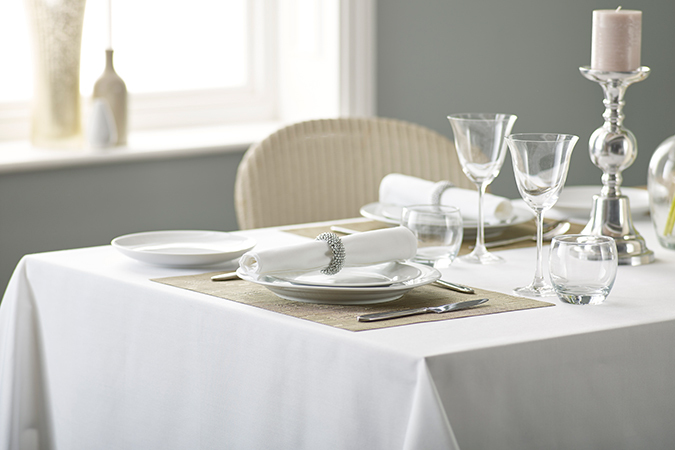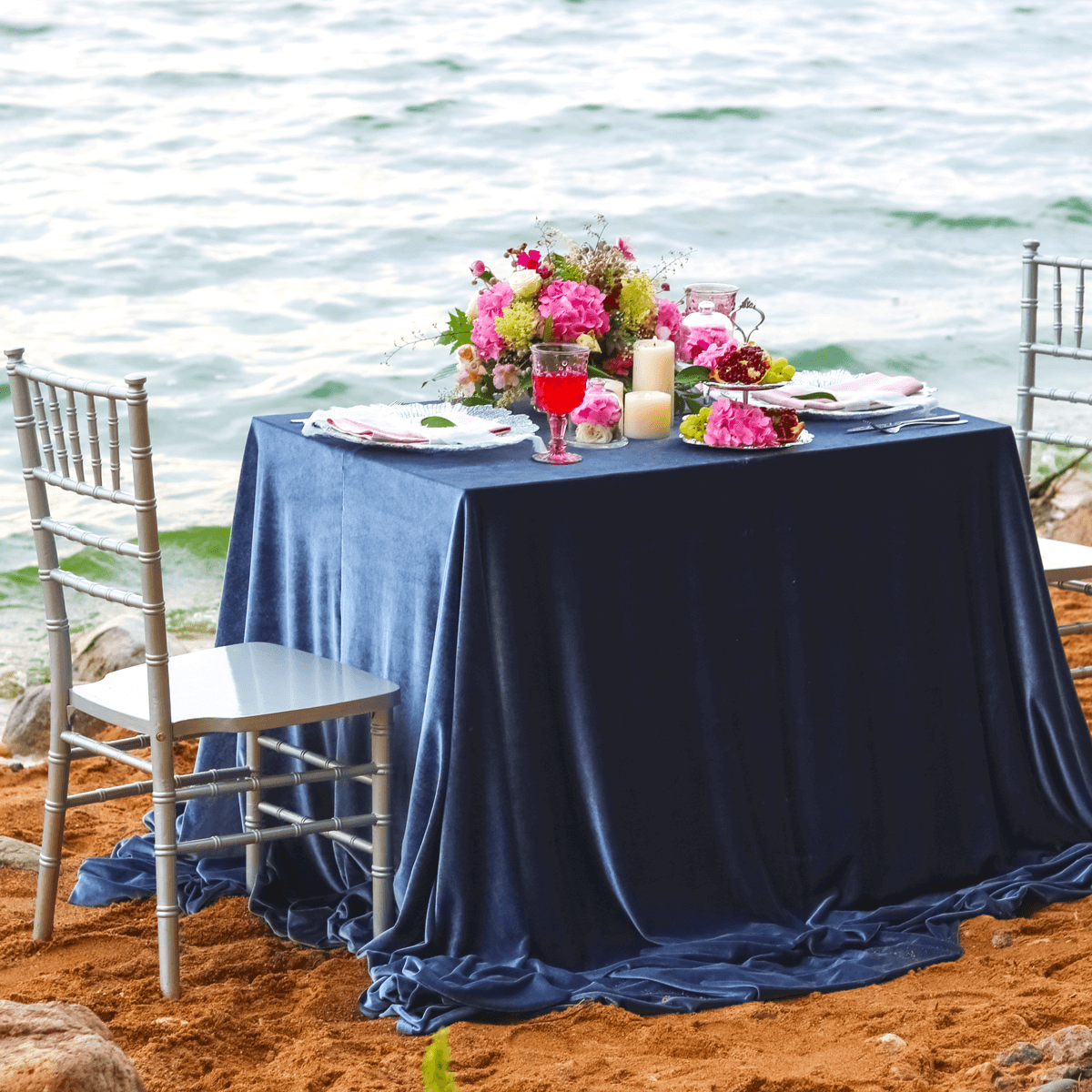Classy Table Cloths: Perfect Choices for Every Event
Wiki Article
Bed Linen Material Innovations: Exploring Modern Trends and Creative Applications in Style and Textile Market
From lasting manufacturing methods to innovative weaving innovations, the development of bed linen is reshaping the landscape of the fabric sector. As we dig right into the worlds of innovative style applications and the appearance of linen blends and hybrid materials, a brand-new phase unravels in which linen's role in future fabric technologies takes facility stage.Sustainable Practices in Bed Linen Manufacturing
Lasting methods in linen manufacturing have come to be increasingly critical in the fabric market's initiatives to reduce ecological impact and promote honest sourcing approaches. Linen, a natural fiber originated from the flax plant, offers an array of benefits such as breathability, biodegradability, and resilience. Nevertheless, typical approaches of bed linen production can include considerable water intake, pesticide usage, and energy-intensive processes.To attend to these challenges, several textile makers are adopting sustainable techniques throughout the linen production procedure. This includes sourcing flax from natural farms that prevent unsafe pesticides and chemicals, carrying out water-efficient retting strategies to extract fibers from the flax stalks, and using environmentally friendly dyes and coatings. Furthermore, some firms are spending in renewable resource resources to power their manufacturing centers and reducing waste with recycling and upcycling campaigns.
Technological Developments in Linen Weaving
With the expanding emphasis on lasting techniques in bed linen production, the fabric sector is currently witnessing a surge in technological innovations specifically targeted at changing the art of bed linen weaving. These innovations are reshaping the way bed linen fabrics are created, providing raised effectiveness, high quality, and creative thinking in weaving methods.One of the key technological developments in linen weaving is the integration of computerized looms. These advanced looms are equipped with software that enables for intricate and elaborate designs to be woven with precision. By digitizing the weaving process, producers can achieve greater consistency and precision in their linen fabrics.
In addition, developments in thread spinning modern technology have actually made it possible for the production of finer and more long lasting linen threads - table cloths. This causes softer and smoother bed linen materials that retain their high quality even after several usages and washes
Furthermore, the growth of environmentally friendly dyeing procedures and surfaces for linen textiles is getting traction. These lasting methods not only reduce the environmental impact but additionally accommodate the enhancing customer demand for morally produced textiles.
Creative Style Applications for Bed Linen
Ingenious imaginative approaches are progressively forming the imaginative style applications for bed linen in the textile industry. Linen's all-natural visual appeal and ability to blend with various other textiles make it a favored option for creating distinct garments and devices that provide to the ecologically mindful customer.Furthermore, developers are trying out with bed linen in home decor, utilizing its long lasting and breathable nature to craft fashionable furnishings such as curtains, bedding, and upholstery. The appearance and drape of linen bring a sense of elegance and comfort to indoor areas, including a touch browse around here of style to modern-day homes.

Linen Blends and Hybrid Fabrics
:max_bytes(150000):strip_icc()/__opt__aboutcom__coeus__resources__content_migration__brides__proteus__585bf60c786c7a9c62c877d2__11-a40aeea82c0a440282d07dadffc6a7d8.jpeg)
Crossbreed fabrics, on the other hand, take the idea of mixing an action even more by including added aspects such as metal strings, recycled products, or conductive fibers. These cutting-edge textiles not only broaden the style possibilities but additionally introduce functional facets like conductivity, antimicrobial residential properties, or improved resilience. Crossbreed materials are significantly being used in different markets, including style, interior style, and technical textiles, where the need for multifunctional materials gets on the rise.
Bed linen's Role in Future Fabric Innovations

In the realm of future fabric developments, bed linen is expected to be a principal in the development of click for source sophisticated practical fabrics. Researchers and designers are exploring ways to improve bed linen's integral qualities through technological improvements, such as including clever textiles, nanotechnology, and efficiency coatings. These innovations aim to elevate linen's performance characteristics, making it appropriate for a wider array of applications, from activewear to safety garments.
Additionally, the mix of bed linen with other natural or synthetic fibers opens up unlimited possibilities for creating novel textiles with unique residential properties and capabilities. By leveraging bed linen's qualities and checking out ingenious blends, the textile market is positioned to present amazing growths that accommodate progressing consumer needs and sustainability requirements.
Verdict
To conclude, the expedition of sustainable practices, technical improvements, creative design applications, linen blends, and its duty in future textile developments highlight the continuous advancement of bed linen fabric in the modern layout and textile industry. With a concentrate on advancement and creativity, the versatility and eco-friendly nature of bed linen make it an important product for manufacturers and developers alike, leading the way for more advancements and developments in the area of textiles.As we dive into the worlds of imaginative style applications and the development of bed linen blends and hybrid textiles, a new phase unfolds in which bed linen's role in future fabric his explanation innovations takes facility stage.
Checking out the fusion of linen with other textiles has led to the appearance of ingenious blends and crossbreed textiles in the contemporary fabric industry. Bed linen blends offer a special mix of the qualities of bed linen with those of various other fibers, resulting in materials that have enhanced residential properties such as enhanced longevity, improved draping, and minimized wrinkling.The advancement of linen blends and hybrid materials has actually established the stage for Linen to play an essential duty in driving future textile developments.In the realm of future fabric technologies, linen is expected to be a crucial gamer in the development of advanced practical textiles.
Report this wiki page